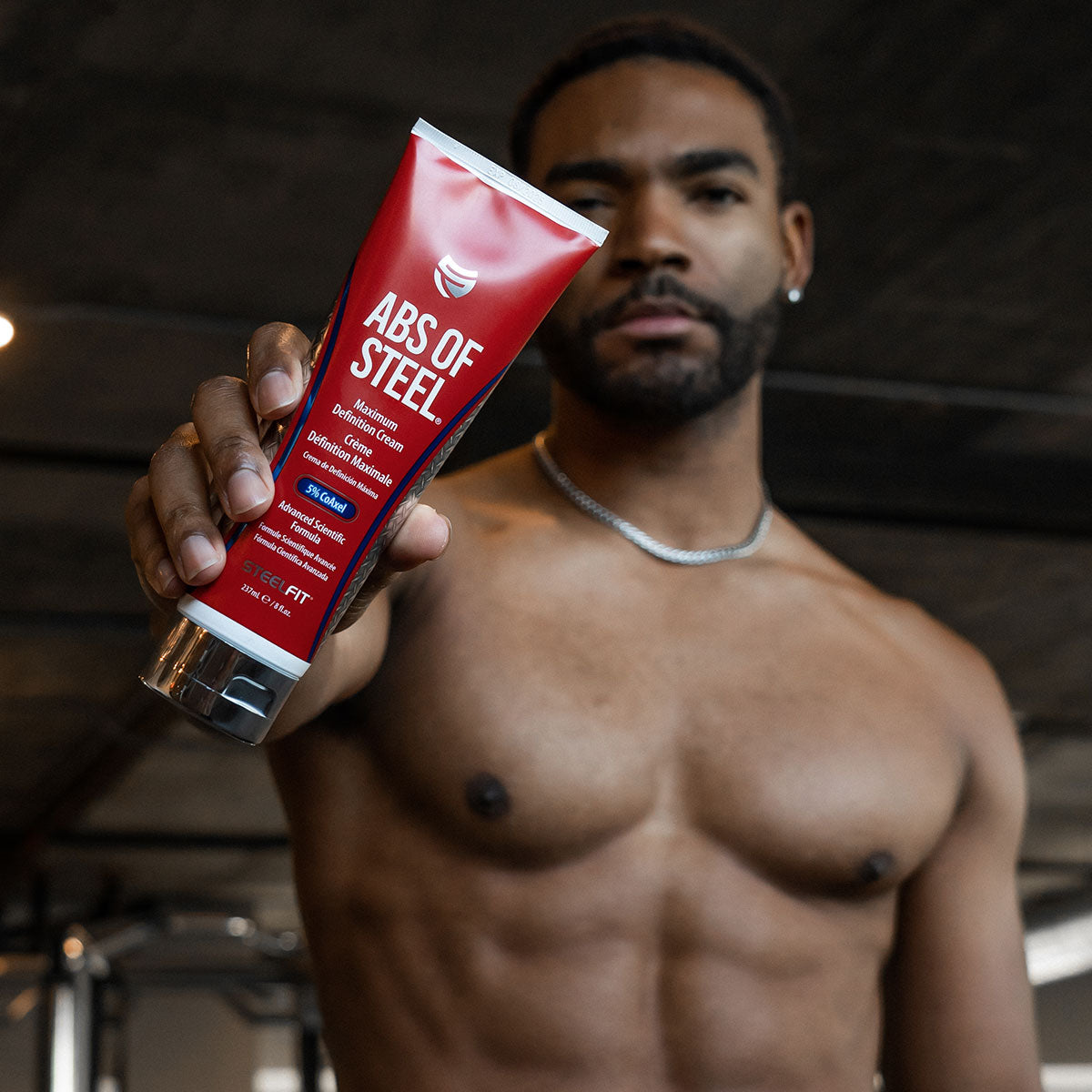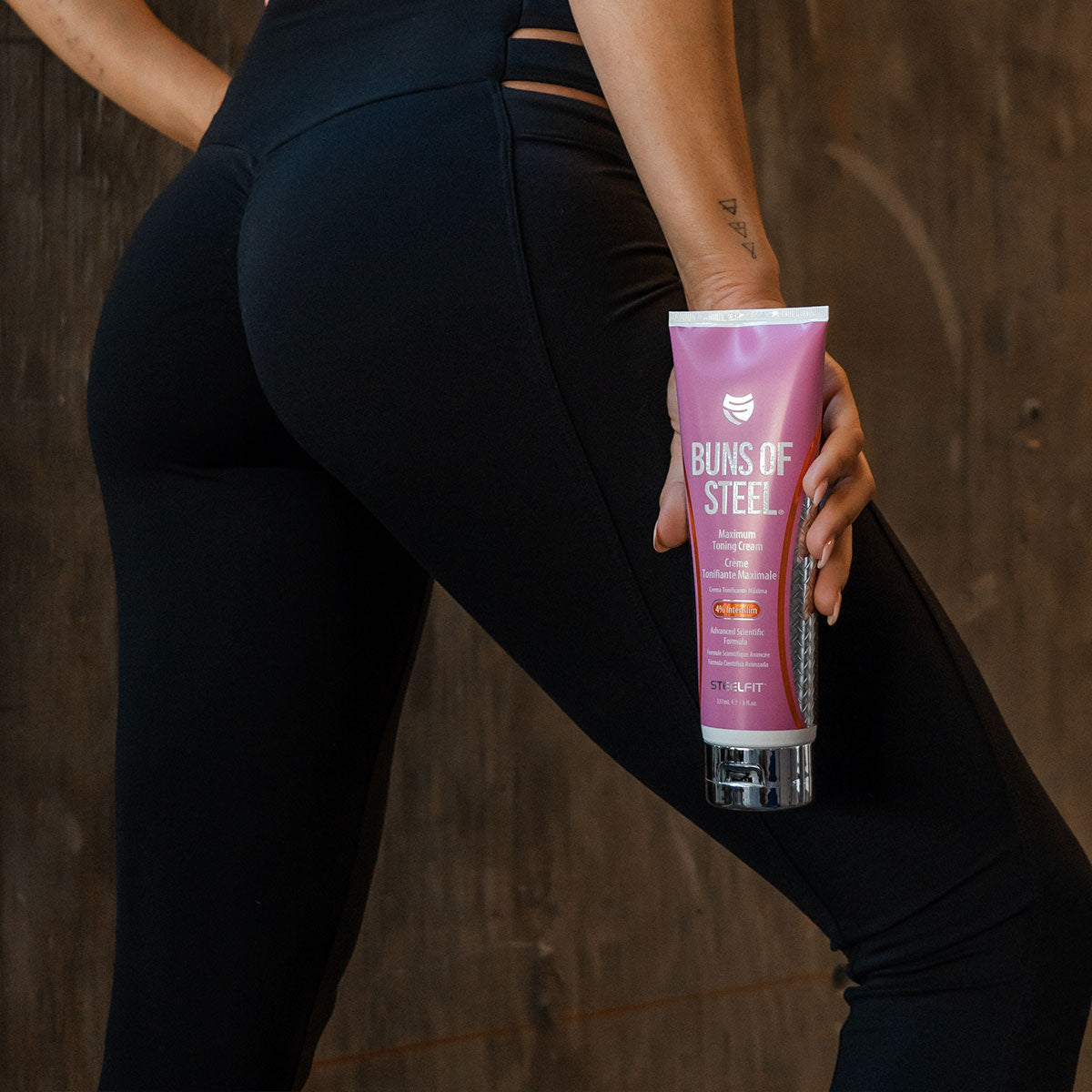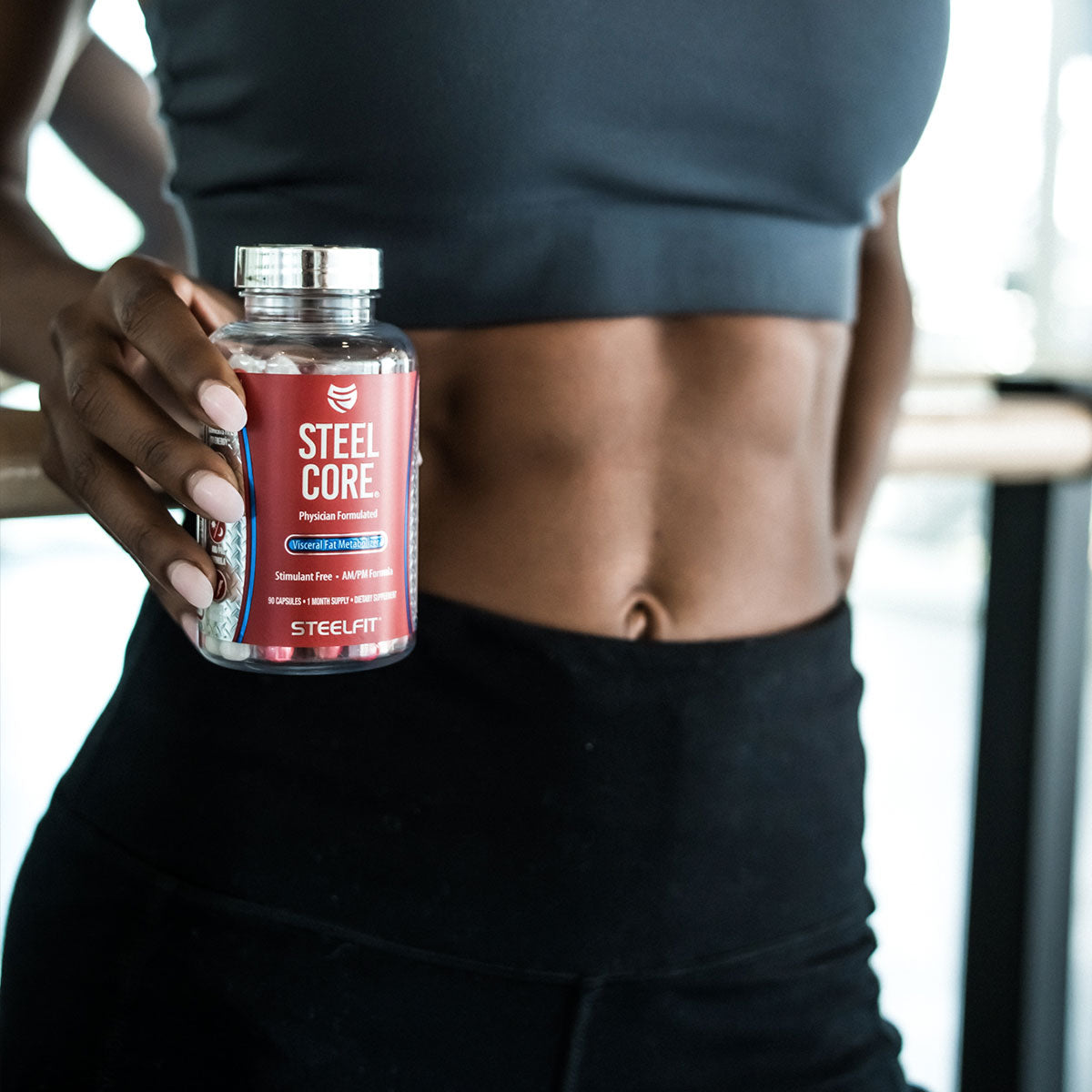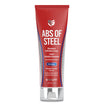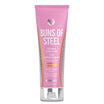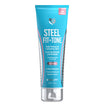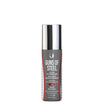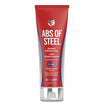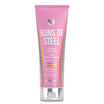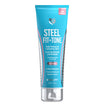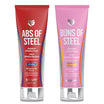Sucralose is the leading artificial sweetener included in sports nutrition supplements these days. There’s a great deal of confusion about whether or not it’s safe for consumption or if it affects your blood sugar like regular sugar does. We’re here to answer all of your questions and more!
Why Sugar is Public Enemy #1
It goes by countless aliases and can be found in all kinds of foods, from the obvious candy bars, cookies, and ice creams to the less obvious ketchup, yogurt, and salad dressings.
Sugar has been targeted for its role in the current obesity and diabetes dilemmas spanning the globe, and in the effort to curtail the ever-increasing health care crisis, food scientists developed an arsenal of alternatives to the conventional calorie-laden sweetener in non-nutritive sweeteners, a.k.a artificial sweeteners.
Chief among these zero-calorie sweetening alternatives is sucralose, better known by the trademarked name Splenda®. But, there’s been growing concern that these man-made sweeteners may be even more dangerous than sugar, bringing with it a host of problems more severe than an expanding waistline.
To help sort through confusion and disinformation, we’ve compiled this tell-all piece to explain what sucralose is, why it’s in your favorite supplements, and if you need to be concerned.
So, let’s start at the top….
What is Sucralose?
Sucralose (Splenda®) is one of the most commonly used non-nutritive sweeteners on the market today. Other top alternatives to sugar include:
- Stevia
- Aspartame
- Ace-K
- Saccharin
- Neotame
- Monk Fruit (Luo Han Guo)
Sucralose is derived from sugar; however, in place of the 3 hydrocarbon groups attached to the carbon backbone are chlorine atoms. This molecular mish-mashing creates a molecule that is not recognized by your digestive system and passes through without being broken down and thus yielding no calories. Hence, sucralose being dubbed a “non-nutritive sweetener”.
Sucralose was discovered in 1976 by a British scientist who misheard instructions about testing a particular substance. Following the mishap, he tasted the “result” and found the new substance to be incredibly sweet.
Following the concerns of reports that aspartame caused cancer (which have since been proven false), sucralose skyrocketed to the forefront of the alternative sweetener line and it debuted in the United States in 1999 in the form of Splenda, which is a joint effort of the companies Johnson & Johnson and Tate & Lyle.
Splenda is frequently used as a substitute for sugar in baking and cooking and can be found in many sugar-free packaged goods these days.
Now, we need to make a small, but slightly important distinction before proceeding further. Sucralose in and of itself is calorie-free; however, Splenda (the little yellow packets you get at restaurants) is NOT calorie-free. Each packet of Splenda actually contains 3.36 calories per gram. <1> This is due to the fact that Splenda packets contain sucralose as well as dextrose and maltodextrin (two calorie-yielding carbohydrates).
Compared to standard sucrose (table sugar), sucralose is approximately 400-700 times sweeter than sugar, and one thing that separates sucralose from just about all other artificial sweeteners is that it doesn’t come with the unpleasant bitter aftertaste. <2,3>
Now, just because sucralose isn’t yielding any calories when you ingest it, doesn’t mean it’s completely inert when passing through your body. After all, when you consume sucralose it does have an extremely sweet taste, so, it stands to reason that it’s affecting some kind of receptor…. right?
Indeed, it does.
How Sucralose Works
Humans (and mice) have a “sweet” receptor called TAS1R3, which sucralose binds to in the body. <4> Other organisms do too! In flies, the sweet receptor is called Gr64a.<5> While it’s not really important that you know what receptor is stimulated by the ingestion of sucralose (or any other artificial sweetener for that matter), it is important to realize that just because something doesn’t yield calories does not mean it’s not affecting your body in some way, shape, or form.
Cellular biology out of the way, now we can begin to answer the question of whether or not sucralose presents any immediate concern.
Sucralose and Blood Sugar
The point of using non-nutritive sweeteners like sucralose is that they come with no calories (or very few) and don’t wreak havoc on blood sugar and insulin levels the way that regular table sugar does. However, due to the fact that sucralose does taste sweet and impact the sweet receptors in our body, it’s reasonable to think that sucralose might affect blood sugar levels.
So, what does the research say?
Well, remember, digestion begins in the mouth where our bodies secrete enzymes that start to “interact” and detect the food we eat and start to break it down. Under normal circumstances (i.e. eating regular sugar), these taste receptors sense sweet, setting off a chain of events that ends with the intestines detecting the sugar present and gleaning some calories (energy) from it. So, what happens when the body detects something but can’t get energy from it?
Well, one of two things…
One study conducted with individuals not accustomed to eating artificial sweeteners noted that ingesting sucralose before glucose can increase blood sugar and the body’s insulin response to carbohydrates. <9> However, after 12 weeks, there were NO significant differences between control and sucralose groups in terms of glucose regulation. In other words, the subjects using sucralose developed a “tolerance” of sorts.
Basically, researchers theorize that ingesting sucralose causes the body to create additional glucose transporters that deliver glucose from the gut to the body. However, this is only occurring in the short term, meaning that the increase in insulin and glucose uptake is only temporary until your body gets acclimated to “experiencing” sucralose in its system.
Sucralose and Appetite
Sucralose and the rest of the non-nutritive sweetening gang are frequently included in foods made to support weight loss efforts, due to the fact that they help reduce the total carb and calorie count of foods, but a common concern about artificial sweeteners is that they actually increase hunger levels.
So, by using sucralose are you “robbing Peter to pay Paul” in a sense...trading the reduced calories to increase hunger, which ultimately means you’re eating more?
Let’s see…
Research notes that sucralose may increase GLP-1 (glucose-dependent insulinotropic peptide) secretions when sucralose is consumed in the form of diet soda, but not when ingested on its own. <11,12> A separate study in mice noted ingestion of sucralose caused an increase in neuropeptide Y, a powerful hunger-stimulating protein. <5>
While this might be a bit off-putting, remember, these studies were conducted in non-human populations. The results of these studies DO NOT translate directly to human metabolism.
Ok, so, are there any human studies assessing sucralose and appetite?
Indeed, there are, and here’s what they found:
Human research found that sucralose does NOT increase appetite, consumed either in the form of diet soda or on its own. <11,13,14> In fact, researchers compared the effects of sucralose on appetite to that of water.
Bottom line -- sucralose doesn’t make you hungrier.
Regarding weight gain, studies on the weight loss/gain effects of non-nutritive sweeteners are mostly correlational and the few double-blind trials that have been run, along with the meta-analyses reviewing everything compiled on the weight implications of non-nutritive sweeteners indicate they have no effect on fat mass or lead to mild weight loss. <15>
Sucralose and Your Gut
A few years back, sucralose came under fire when some rodent research documented that ingestion of the non-nutritive sweetener increased the rat’s risk for irritable bowel diseases <6>, though some researchers suspect this is more likely attributed to a low fiber intake than the artificial sweeteners.
Other research in mice noted sucralose led to the development of symptoms associated with Crohn’s disease and liver inflammation. <7,8> However, these studies noted that the effects were dependent on the gut bacteria present on the mice, not the interactions with the rodents’ “sweet receptor.”
In particular, the study noting liver inflammation showed a change in the intestinal bacteria towards strains that were pro-inflammatory (i.e. “bad” bacteria) whereas the Crohn’s study noted an increase in oxidation generated by the gut bacteria.
While this might be fodder for the fearmongering folks in the media, there’s a couple things to remember about these studies:
- They’re conducted in rats. It’s nigh-impossible to extrapolate what would happen to humans. We barely have a grasp on our own metabolism, much less the intricacies of our gut bacteria. It might be that the gut bacteria themselves have sweet receptors and get a bit angry when they’re tricked by these “fake sugars.”
- The animals used in the studies consumed an extremely poor diet, and it’s simply not logical to assume that what occurs in their gut microbiome will carry over into a human gut, especially if one is consuming a diverse diet rich in micronutrients.
Is Sucralose Safe?
To date, science has not conclusively shown that sucralose presents any immediate danger or concern with consuming it on a regular basis. Additionally, it’s also be designated GRAS (generally recognized as safe) by the FDA.
There are some animal studies showing it can alter gut bacteria, but nothing conclusive has been proven one way or another in human trials. Also, while sucralose may have a very short-term effect on glucose and insulin secretions, the effects do not appear to be long-lasting, and there’s also no evidence that sucralose adversely impacts weight or hunger levels in humans.
Given the drove of consequences that come with excess sugar consumption, having an alternative that doesn’t provide a way to enjoy sweet food fare without having to worry about blowing your diet or messing with your insulin levels.
All things considered, sucralose is recognized as safe for consumption and when stacked up against the other sweetening options available seems to be a fairly safe bet. If you’re concerned about any GI issues from using sucralose, make sure to consume moderately and always maintain a micronutrient-dense diet full of whole foods.
References
- https://ndb.nal.usda.gov/ndb/search
- WIET, S. G. and BEYTS, P. K. (1992), Sensory Characteristics of Sucralose and other High Intensity Sweeteners. Journal of Food Science, 57: 1014-1019. doi:10.1111/j.1365-2621.1992.tb14345.x
- Horne J, Lawless HT, Speirs W, Sposato D. Bitter taste of saccharin and acesulfame-K. Chem Senses. 2002;27(1):31-38.
- Harrington EO, Vang A, Braza J, Shil A, Chichger H. Activation of the sweet taste receptor, T1R3, by the artificial sweetener sucralose regulates the pulmonary endothelium. American Journal of Physiology - Lung Cellular and Molecular Physiology. 2018;314(1):L165-L176. doi:10.1152/ajplung.00490.2016.
- Wang Q-P, Lin YQ, Zhang L, et al. Sucralose Promotes Food Intake through NPY and a Neuronal Fasting Response. Cell Metab. 2016;24(1):75-90. doi:10.1016/j.cmet.2016.06.010
- Sakamoto N, Kono S, Wakai K, et al. Dietary risk factors for inflammatory bowel disease: a multicenter case-control study in Japan. Inflamm Bowel Dis. 2005;11(2):154-163.
- Rodriguez-Palacios A, Harding A, Menghini P, et al. The Artificial Sweetener Splenda Promotes Gut Proteobacteria, Dysbiosis, and Myeloperoxidase Reactivity in Crohn’s Disease-Like Ileitis. Inflamm Bowel Dis. 2018;24(5):1005-1020. doi:10.1093/ibd/izy060
- Bian X, Chi L, Gao B, Tu P, Ru H, Lu K. Gut Microbiome Response to Sucralose and Its Potential Role in Inducing Liver Inflammation in Mice. Frontiers in Physiology. 2017;8:487. doi:10.3389/fphys.2017.00487.
- Pepino MY, Tiemann CD, Patterson BW, Wice BM, Klein S. Sucralose Affects Glycemic and Hormonal Responses to an Oral Glucose Load. Diabetes Care. 2013;36(9):2530-2535. doi:10.2337/dc12-2221.
- Stearns AT, Balakrishnan A, Rhoads DB, Tavakkolizadeh A. Rapid Upregulation of Sodium-Glucose Transporter SGLT1 in Response to Intestinal Sweet Taste Stimulation. Annals of surgery. 2010;251(5):865-871. doi:10.1097/SLA.0b013e3181d96e1f.
- Sylvetsky AC, Brown RJ, Blau JE, Walter M, Rother KI. Hormonal responses to non-nutritive sweeteners in water and diet soda. Nutrition & Metabolism. 2016;13:71. doi:10.1186/s12986-016-0129-3.
- Ma J, Bellon M, Wishart JM, et al. Effect of the artificial sweetener, sucralose, on gastric emptying and incretin hormone release in healthy subjects. American Journal of Physiology - Gastrointestinal and Liver Physiology. 2009;296(4):G735-G739. doi:10.1152/ajpgi.90708.2008.
- Steinert RE, Frey F, Topfer A, Drewe J, Beglinger C. Effects of carbohydrate sugars and artificial sweeteners on appetite and the secretion of gastrointestinal satiety peptides. Br J Nutr. 2011;105(9):1320-1328. doi:10.1017/S000711451000512X
- Ford HE, Peters V, Martin NM, et al. Effects of oral ingestion of sucralose on gut hormone response and appetite in healthy normal-weight subjects. Eur J Clin Nutr. 2011;65(4):508-513. doi:10.1038/ejcn.2010.291
- Miller PE, Perez V. Low-calorie sweeteners and body weight and composition: a meta-analysis of randomized controlled trials and prospective cohort studies. The American Journal of Clinical Nutrition. 2014;100(3):765-777. doi:10.3945/ajcn.113.082826.
